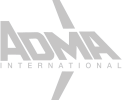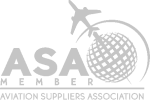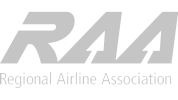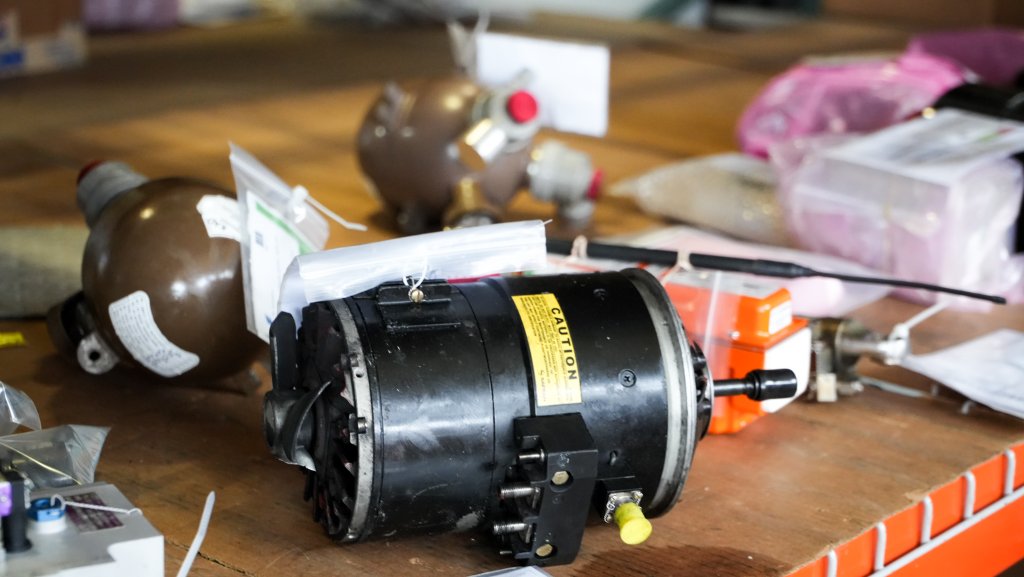
Waiting for an aircraft part to be repaired or overhauled may take too long, and buying a part outright may be too expensive. Part exchange purchases are a quick and cost-effective way to receive a serviceable part, ready for installation on your aircraft.
There are a few different aircraft parts exchange options, but they all require a core return. The core (or off-unit) is the part that is removed from the aircraft and traded for the serviceable exchange unit. This may seem very straightforward, but the core return process can be more complex.
We get asked about the core return process all the time – everything from what cores are accepted on exchange, what documentation to include, how to ship the core, and what to do if the core is unable to be repaired. In this article, we answer your questions, providing you with the information you need about the core return process.
What Options are Accepted in a Core Return?
The core offered in exchange should be the same part number (or an acceptable alternate) as the exchange unit. The core must not have been involved in an incident and must be capable of being refurbished to the same condition as the exchange unit for the supplier to resell.
Alternate Part Numbers
Sometimes alternate parts are acceptable as cores. An alternate part will have a different part number than the exchange unit but is interchangeable with that unit.
The buyer should research whether an alternate part is acceptable. Not all alternates are interchangeable, depending on the type of aircraft on which the alternates are being installed.
Due to company policies, the supplier may choose not to accept an alternate part number, even if it is interchangeable.
Aircraft Part Variants
Some suppliers may accept cores that are earlier versions or variants of the part sold on exchange provided they can perform upgrades to the core to match the exchange unit. Suppliers who do not have the capabilities or resources to perform these upgrades or modifications may not accept variants.
A Repaired or Overhauled Core
In some cases, a supplier will accept back a core that has already been repaired or overhauled (to the same condition as the exchange unit) by the buyer’s repair vendor.
This happens when a buyer sends their core out for repair, then can’t wait for maintenance to be completed. The buyer offers their core in exchange for a part they can obtain sooner.
The supplier must approve the repair vendor before exchanging the repaired or overhauled part.
What If a Core is Not Accepted for Exchange?
If the supplier receives a core that is not compatible with the exchange unit, another core will need to be shipped to the supplier.
If another core cannot be acquired to replace the exchange unit, the supplier will require that the full value of the exchange unit be paid.
What is Trace Documentation?
Many suppliers require trace documentation or a specific “Core Return Form” with key trace details to accept a core back in trade. Trace documentation will usually include the following:
- Non-incident Statements – Cores should include a non-incident statement. This indicates that the core was not taken from a U.S. Government or Military source and was not subject to severe stress or heat, was immersed in salt water, or was involved in a major engine failure, accident, incident, or fire. Cores from aircraft that have been involved in any of the above are usually not accepted in exchange.
- Who Removed the Part from the Aircraft – Cores should include documentation with a signature from an authorized company representative (most likely an A&P Mechanic) who removed the part from the aircraft.
- What Aircraft Did the Part Come From – Cores should include information about the aircraft from which the part was taken. This would include the aircraft’s serial number, registration number, etc.
- Time/Cycles – Some cores should include information about how much time or how many cycles are on the part. For example, a TSO (time since overhaul) or CSO (cycles since overhaul) help calculate when the part needs to be overhauled again. If the part has a limit on its allowable life, it might have a TSN (time since new) or CSN (cycles since new).
Without trace documentation, suppliers may not be able to accept the core. If this information cannot be supplied, buyers may receive additional charges, such as a bill back for over and above (O&A) repair costs. If the core is rejected, they may need to pay the full value of the exchange unit.
How to Ship an Aircraft Part Core?
Specific Packaging
Aircraft parts may require special packaging, specified on the supplier’s notes or quotes. The D.O.T. may also require specific packaging and labeling for shipping aircraft parts, such as HAZMAT parts.
Buyers may be required to return the aircraft part core in the same packaging the exchange unit arrives in or acquire that specific packaging before shipping the core to the supplier. For instance, if a windshield is shipped in a crate from the supplier, the core windshield must be returned in that crate or another just like it. (Note: if the supplier requires that their packaging be returned, and it is not, the buyer may be billed for a replacement package.)
Using inadequate packaging could result in the core being damaged and unacceptable for return. Be sure to always use appropriate packaging for the core return.
Timeframe for Shipping
Core due dates are specified on the quote, sales order, or exchange agreement. Cores must be sent to the supplier before the core due date. Therefore, the buyer needs to account for possible delays in the shipping time to ensure the core arrives before the due date.
If the core must pass through customs, there may be delays. Delays can happen for various reasons, usually because some required information is missing or inaccurate. To avoid these potential delays, ensure that the required information is completed correctly.
Core Return Delays
If there are issues with the core shipment or if the core gets delayed in customs, let the supplier know as soon as possible. They might have the resources to assist with the shipment process and getting the part through customs.
Keep in mind that if a delay is unavoidable and the supplier cannot be of assistance, additional exchange fees or core billing will be charged for not receiving the core on time.
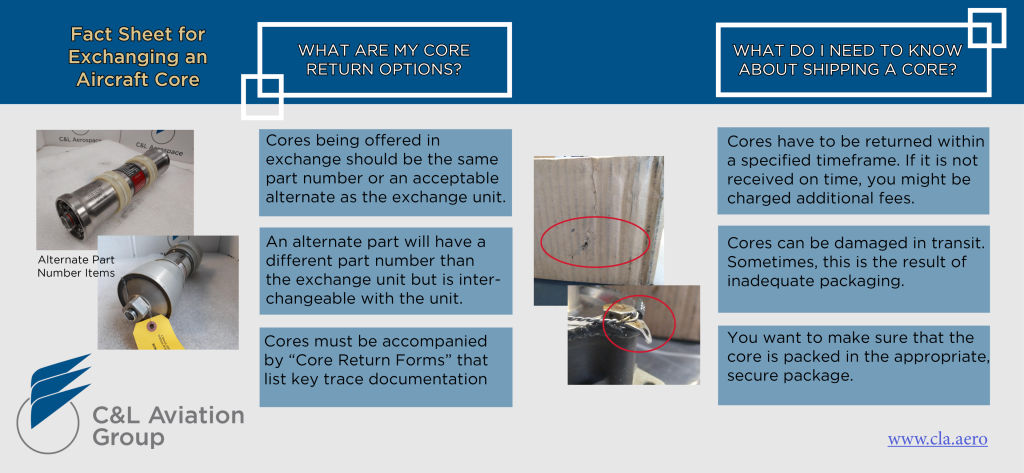
What if the Aircraft Part Core is BER?
Cores are deemed beyond economical repair (BER) if the cost to repair or overhaul exceeds the value of the core.
If the buyer learns that the core is BER after sending it to the supplier’s repair vendor, there’s a chance the supplier will allow the buyer to send a (hopefully) better core for evaluation. If the supplier does not accept another core (or the buyer does not have a second core), the buyer will be responsible for the core charge and any additional fees incurred.
Core Exchange Advice
For questions about the core return process or core due dates, consult the exchange agreement provided by the supplier that outlines the terms and expectations for the exchange. It is also important to maintain open communication with the supplier. The supplier should be willing to discuss the specifications for exchanging a core and answer any questions.





